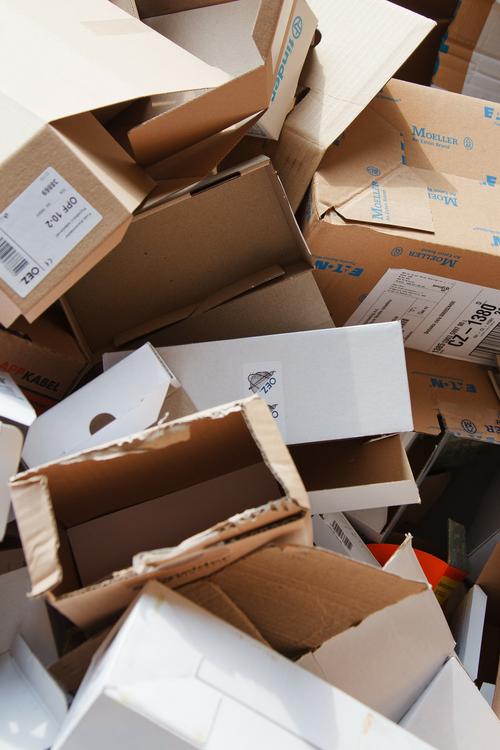Amazon Shakes Up Competitive Strategy of Logistics
Drones. Trucks. Cars. Worldwide brick and mortar fulfillment centers. Delivery in 30 to 60 minutes. And, now talk about leasing cargo planes. These sound like strings of strategy planning discussions from UPS, FedEx, and the likes of other logistics companies, right.
Think again. It's Amazon who's doing the talking now. And that conversation will surely shape the strategies of the big names of the logistics industry.
Long known as a disruptive force in e-commerce, the online retailer's non-stop growth appears to be stretching its fulfillment capacities and those of its shipping partners, an issue Amazon seems hell-bent on fixing, one way or another.
Sales drives fulfillment drives sales
In some ways, the never-ending game of cat and mouse seems to be at the heart of Amazon's woes. Sales go up, and so do fulfillment needs. Faster fulfilment and more reliable and dependable delivery service marks companies a differentiator, and, in turn, wins customer respect and loyalty–and repeat and new business.
Amazon's net sales increased 23% to $25.4 billion in the third quarter ended Sept. 30, 2015, compared with $20.6 billion in third quarter 2014, according to the company'spress release. Excluding a $1.3 billion "unfavorable impact" from year-over-year changes in foreign exchange rates throughout the quarter, net sales climbed 30% from the year-ago quarter, it added. For the busy holiday season and fourth quarter ended Dec. 31, 2015, Amazon told Wall Street that net sales were expected to be between $33.50 billion and $36.75 billion, or to grow between 14% and 25% compared with the same 2014 quarter. As sales rise, so do Amazon's fulfillment costs, which were more than 12% of net sales for the nine months ended September 2015, according to this Trefis report, citing Amazon's SEC documents.
In the last few months, dribbles of news from the company and mainstream media about practices and processes Amazon is putting in place seem to point in one direction: Building its own logistics empire using all modes of transportation from drones to Amazon-branded trucks and perhaps even airplanes. Reports from the Seattle Times,Wall Street Journal, Slate, Evening Standard and other media outlets that flooded the news stream in mid-December indicate that Amazon may be looking to create air freight operations in the U.S. and Europe and is in talks to lease or charter Boeing 767 cargo planes.
Looking for control or creating competition?
While the company has not released an official statement on its air cargo strategy (as of the end of December), the public conversation around the rumors and comments from "people familiar with the matter" suggest that Amazon wants to eliminate fulfillment bottlenecks with overstretched logistics partners; reduce it reliance on third-party providers, namely UPS, and maintain more control over its own fulfillment and delivery.
For a company with deep pockets like Amazon, where fulfillment and delivery are critical pieces of success, perhaps these moves make sense. If it manages to pull off even some of these plans, Amazon will likely win an even greater competitive advantage in its core marketplace and create disruption among tradition logistics providers. And, from there, what's stopping it from becoming a competitor to its existing partners?
And, if these plans stay only in the rumor mill and don't come to fruition, it may be enough to rattle the cages of the entire logistics industry and compel innovation in the segment.
Innovation, however it comes, will be a welcome change, and competitive improvements could trickle down to logistics, fulfillment, and delivery improvements that eventually directly impact the electronics industry. Where do you think the changes will show up first? Let us know in the comments section below.
Think again. It's Amazon who's doing the talking now. And that conversation will surely shape the strategies of the big names of the logistics industry.
Long known as a disruptive force in e-commerce, the online retailer's non-stop growth appears to be stretching its fulfillment capacities and those of its shipping partners, an issue Amazon seems hell-bent on fixing, one way or another.
Sales drives fulfillment drives sales
In some ways, the never-ending game of cat and mouse seems to be at the heart of Amazon's woes. Sales go up, and so do fulfillment needs. Faster fulfilment and more reliable and dependable delivery service marks companies a differentiator, and, in turn, wins customer respect and loyalty–and repeat and new business.
Amazon's net sales increased 23% to $25.4 billion in the third quarter ended Sept. 30, 2015, compared with $20.6 billion in third quarter 2014, according to the company'spress release. Excluding a $1.3 billion "unfavorable impact" from year-over-year changes in foreign exchange rates throughout the quarter, net sales climbed 30% from the year-ago quarter, it added. For the busy holiday season and fourth quarter ended Dec. 31, 2015, Amazon told Wall Street that net sales were expected to be between $33.50 billion and $36.75 billion, or to grow between 14% and 25% compared with the same 2014 quarter. As sales rise, so do Amazon's fulfillment costs, which were more than 12% of net sales for the nine months ended September 2015, according to this Trefis report, citing Amazon's SEC documents.
In the last few months, dribbles of news from the company and mainstream media about practices and processes Amazon is putting in place seem to point in one direction: Building its own logistics empire using all modes of transportation from drones to Amazon-branded trucks and perhaps even airplanes. Reports from the Seattle Times,Wall Street Journal, Slate, Evening Standard and other media outlets that flooded the news stream in mid-December indicate that Amazon may be looking to create air freight operations in the U.S. and Europe and is in talks to lease or charter Boeing 767 cargo planes.
Looking for control or creating competition?
While the company has not released an official statement on its air cargo strategy (as of the end of December), the public conversation around the rumors and comments from "people familiar with the matter" suggest that Amazon wants to eliminate fulfillment bottlenecks with overstretched logistics partners; reduce it reliance on third-party providers, namely UPS, and maintain more control over its own fulfillment and delivery.
For a company with deep pockets like Amazon, where fulfillment and delivery are critical pieces of success, perhaps these moves make sense. If it manages to pull off even some of these plans, Amazon will likely win an even greater competitive advantage in its core marketplace and create disruption among tradition logistics providers. And, from there, what's stopping it from becoming a competitor to its existing partners?
And, if these plans stay only in the rumor mill and don't come to fruition, it may be enough to rattle the cages of the entire logistics industry and compel innovation in the segment.
Innovation, however it comes, will be a welcome change, and competitive improvements could trickle down to logistics, fulfillment, and delivery improvements that eventually directly impact the electronics industry. Where do you think the changes will show up first? Let us know in the comments section below.


No comments:
Post a Comment